Enjoy the spring light of Jingshan Mountain and taste the charm of Tang and Song Dynasties Zen tea
As a native of southern Anhui, perhaps due to the influence of my father, I have also become a person who loves tea. During the trip, after a long day of travel, the most relaxing thing was making a good cup of tea in my room.
Although I love tea, I don't know how to taste tea. When I drink it in my mouth, it tastes good tea to me. I have been to so many places and drank a lot of teas. The one that surprised me the most is Jingshan, so that after six years, I am still full of expectations for this place. So this time, I took advantage of the mining of Jingshan camellia to come here again to enjoy the spring light of Jingshan and taste the charm of Tang and Song Zen tea.


My memories of Jingshan are all centered around the tea here. I returned to Jingshan again and watched the Jingshan Tea Ancestor Sacrifice on a tea field. This is the 9th Green Shenjing Tea Ancestor Sacrifice. I have often participated in various festival activities before, but this is the first time I have seen a tea ancestor festival organized spontaneously by the people. This also reflects the gratitude of Jingshan tea farmers to the tea ancestors.



The venue for the Tea Ancestor Festival was also carefully chosen. It was chosen on the tea field halfway up the mountain. Here, camellia trees can be seen everywhere, and the festival activities are particularly meaningful.
Beat the tea drums, pay tribute, light candles, pay incense, and bow to salute. Jingshan tea farmers worshipped the originator of Jingshan Tea in the most pious way-Guoyi Dajue Zen Master Fa Qin and Tea Saint Lu Yu.


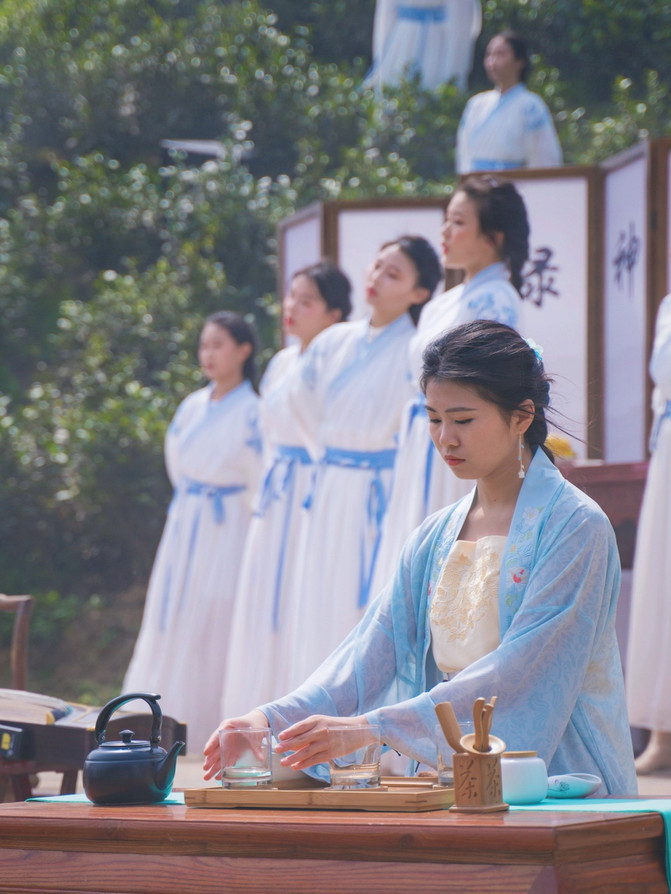
At the ceremony, people related to tea gathered from all over the world, including tea farmers from Jingshan, frying masters of Jingshan Tea, tea company representatives of Jingshan Tea, people who love tea like me, and students from vocational colleges with majors related to tea. The whole ceremony moved me most than the apprenticeship ceremony. Young students studied Master Zhou Fanglin, a provincial intangible cultural heritage inheritor, passed on the intangible cultural heritage skills of Jingshan frying tea and continued to write the history of Jingshan Camellia.
Roaming the First Zen Tea Village and experiencing the beautiful new countryside of Jingshan
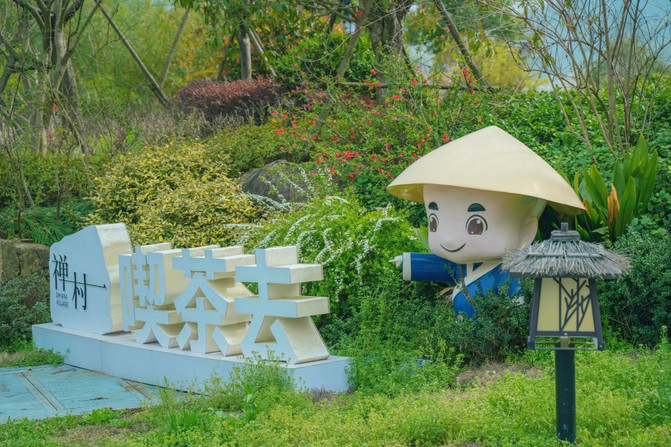
From ancient times to the present, Jingshan has been famous for its Zen, tea ceremony, and mountains and rivers. Jingshan Temple and Jingshan Tea are famous golden business cards. But Jingshan's beauty is far more than that. In addition to Shanshui Zen tea, it also has profound culture and exquisite cultural creation... Today, let's follow me to get to know the first Zen tea village-Jingshan Village again.
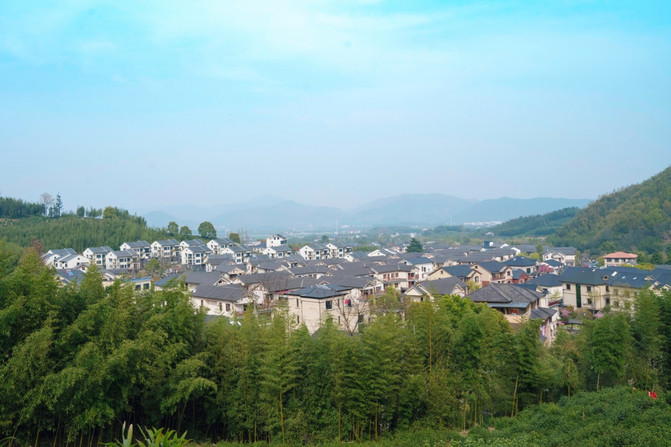

Come to Jingshan Village and stroll through this first Zen tea village. The whole village is surrounded by mountains, gurgling springs, and beautiful scenery. Walking on the trails, you can feel the influence of Zen between the mountains and rivers, and change the scenery. It is simply a paradise for Zen life!


Arriving at the foot of Jingshan Village, follow the bluestone staircase to the top of the tea field. Along the way, you can see tea farmers working hard to pick camellia. When I arrived at the top of Chashan Mountain, I looked into the distance, and I saw a beautiful scenery in front of me, half green, with beautiful rivers accompanying the streams.
Perch in Jingshan and observe the skills of fried tea in Jingshan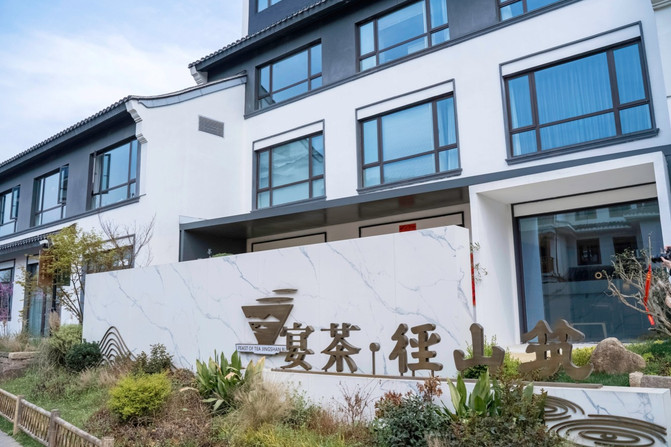

With the continuous development of tourism in Jingshan Village, more and more tourists have discovered this hidden tourist destination in Hangzhou, which has also promoted Jingshan Village's tourism facilities to become more and more complete. Today's Jingshan Tea has many very good B & Bs, such as the Jingshan Zhu B & B we stayed in during this trip.



When I came to Jingshanzhu, I was greatly surprised by the exquisite scenery of B & Bs in front of me. This place gave me a new understanding of B & Bs. The environment built on Jingshan is also very good. There are green trees in front of the house and behind the house. There are not only ancient tea trees, but also bamboo that is "uninhabitable". The decoration style of the entire B & B also belongs to the simple style of logs. The log furniture that can be seen everywhere is also very consistent with the style of Jingshan tea.


Jingshanzhu is not just a B & B, it also has the experience of Jingshanjia banquet. As the source of Japan's tea ceremony, the Jingshan Tea Banquet has always had its unique status. For ordinary tourists, the traditional temple version of the tea banquet has some limitations. It is more solemn but not highly interactive. The folk Jingshan Tea Banquet represented by Jingshan Building dares to innovate, focusing on improving the interactivity and interest of tourists, so that more people can feel the culture of the Jingshan Tea Banquet.


When it comes to Jingshanzhu, you have to mention Zhou Fanglin. Zhou Fanglin, a Jingshan man who was born under and grew up among tea trees, and accompanied by tea. He is the founder of Jingshanzhu and is also the inheritor of intangible cultural heritage skills of Jingshanzhu. There is another must-miss experience when you come to Jingshanzhu, which is to visit Zhejiang's intangible cultural heritage Jingshan-frying skills.



"Picking, spreading green, green, trimming strips, picking tea, rolling, unblocking, primary baking, trendy tea, and re-baking. There are so many steps in the frying of Camellia japonica, and each step has standards and attention." Zhou Fanglin has been with tea for decades and is currently the only provincial-level intangible cultural heritage inheritor of the frying skills of Camellia japonica. While visiting the fried tea, the fragrant tea flavor comes to my nostrils. This feeling is really extremely beautiful.


As a B & B, the rooms in Jingshan Zhu are also very good. The rooms all have very nice names. We stayed in the Zhuquan room type. The style of the room also continues the characteristics of the original wood style. The simple design and bright environment also make people feel warm.


As a B & B, Jingshanzhu's meals can be said to be the most exquisite of any B & B I have ever stayed in. Whether it is the variety of dishes, the innovative cooking methods of the dishes, or the exquisite presentation of the dishes, we are all amazed. For example, this tea-scented baked chicken uses free-range chickens raised by surrounding farmers. Based on the traditional casserole baked chicken, it innovatively adds camellia to the whole chicken to have the fragrance of tea, and the color of the chicken also looks particularly tempting.


Qingming Fruit is just before the Qingming Festival. At this time, there is such a special snack in the Jiangnan area-Qingming Fruit is deeply loved by the majority of diners.
The Qingming fruits built in Jingshan were all freshly made by chefs on the same day, and the raw materials for the filling were also made from farm ingredients. The entire Qingming fruits also taste very good, and the most delicious flavor of the season is at the entrance.

Beef in tea soup, this is also an innovative dish. The stewed beef is placed on a plate, sprinkled with celery grains, and then poured on the beef with Camellia tea soup. This is a tea soup that is very related to Camellia japonica and very creative. The tea soup and celery grains make the stewed beef taste fresher, and the beef is also mixed with the fragrance of tea leaves in the mouth.

Tea-scented shrimp is also a dish related to Camellia japonica. Put Camellia japonica and shrimp into an oil pan and fry slowly until the tea leaves become crispy, and then stir-fry them with the auxiliary ingredients. This makes the tea leaves can be enjoyed directly, which is also interesting.
Jingshan Temple tea opening ceremony and experience the intangible cultural heritage tea banquet

Six years ago, the chanting sound of Jingshan Temple while experiencing meditation was still echoing in my ears. This time, I am back to experiencing the Jingshan Zen Tea Opening Ceremony and the "Jingshan Tea Banquet" human intangible cultural heritage activity.
There are many temples in Jiangnan. Perhaps Jingshan Temple is not so famous, but Jingshan Temple still has a very high status in Buddhism. This temple with a history of more than 1200 years is known as the first of the five major Buddhist monasteries in Jiangnan. Its status is even higher than Lingyin Temple in Hangzhou and Guoqing Temple in Taizhou.


When you come to Jingshan Temple, you have to mention the Jingshan Tea Banquet, which is a UNESCO certified intangible cultural heritage and a must-experience project when you come to Jingshan.
Many people only know about the tea ceremony in Japan, but they don't know that it evolved from the introduction of tea banquets into Japan from Kyoyama Temple. Therefore, Kyoyama Temple is also known as the origin of Japan's tea ceremony.



Arriving at Jingshan Temple, the prosperity of thousands of years ago remains the same. Slowing down, putting down my mobile phone, and strolling among the temples, feeling the tranquility brought by my unique Jingshan Temple. Japan not only inherited the tea ceremony from Jingshan Temple, but the architectural style of the temple here has also been passed down to Japan. The buildings here are simple and elegant in color and tall eaves, with a strong Tang and Song charm.



As the ancestral source of the tea ceremony, Jingshan Temple is one of the most important activities every year. This time, I came to Jingshan Temple for this grand and grand event. The event officially began at 9:30. Jingshan tea lovers, Jingshan Temple monks, and Jingshan tea merchants from the surrounding area gathered in front of the Zen Tea Ancestral Source Monument to open a tea-sprinkling ceremony in the east.



After the opening ceremony, he followed the master to tour the Tea Mountain. Along the Tea Mountain, he could see many monks picking tea on the slopes of various places on the Tea Mountain. This was also the official start of Jingshan Zen Tea and Guimao Spring Tea Picking. Then follow the Chashan, Ancestral Pagoda, Imperial Stele Pavilion, Daoyuan Pavilion, Shanmen Zhaobi, Wufeng Mountain Gate, and gather in the Ancestral Hall.

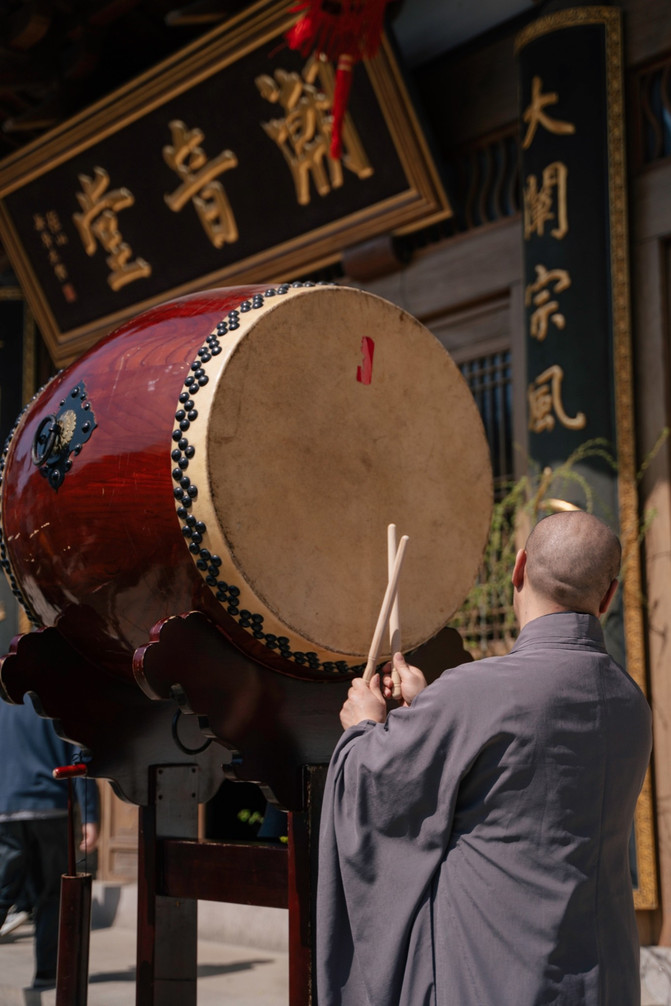
Come to the Zutang, offer sacrifices to the founder of Jing0 Temple and the Zen Master of Jingshan Zen Tea Nui Motherland, and offer tea for ordering tea. In the process of experience, I feel the emptiness in my heart, and also appreciate the lightness and elegance of Zen life. I appreciate that "if you don't worry about anything else, it's a good time in the world."
I would like to transform into a fragrant tea leaf, exposed to the wind and rain, and baked by the fire, but I hope I can pass by Jingshan, and the first time I see Jingshan-love it.
I would like to transform into a ray of breeze that blows through mountains and rivers, but I hope to pass by Jingshan and see Jingshan for the second time-amazing.
I would like to turn into a green bamboo tree, root here, never be separated from Jingshan again, and see Jingshan for the third time-stop.



What I am most looking forward to in the whole event is the last Jingshan Tea Banquet and the human intangible cultural heritage experience activity. Following the footsteps of the master to Chaoyin Hall, tea lovers sat at the table, Zhang tea lists, beat tea drums, and respectfully invited to enter the hall, serve incense and pay homage to Buddha, fry soup and order tea, walk a cup to divide tea, say a hymn to eat tea, and retire from the hall. There are more than ten exquisite ritual procedures.
Zen tea is a unique word in Buddhism. For me, who has never heard of it, I am very curious about the meaning of this word. Zen is a kind of realm. Zen tea is focused on blindly. Zen is also the enlightenment of the mind; tea is the spiritual bud of matter; blindly; it is the connection between heart and tea, heart and heart.
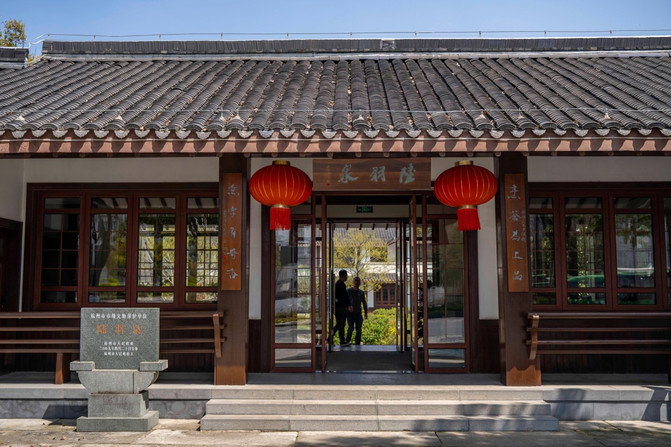

When it comes to Jingshan, it has always been known as "the place where the tea saint writes scriptures and the source of Japan's tea ceremony." Along the Beitiaoxi stream, you can see an elegant courtyard. This is the place where the "third spring in the world" is known as the "Lu Yuquan".
Since ancient times, there have always been good teas matched with good springs. For example, the best combination of Longjing tea in Hangzhou is the spring water of Hupaoquan, and the best combination of Jingshan tea is this Luyu Spring.
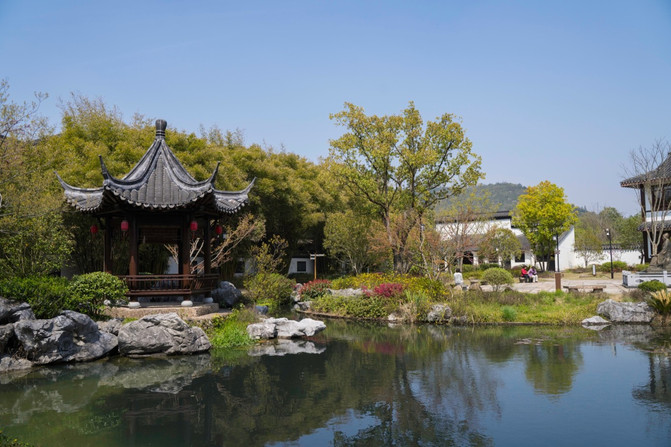

At the entrance of Lu Yuquan, there are several teahouses where you can taste tea. In such an environment, tea tasting seems to have a different artistic conception, as if you can feel the situation that Lu Yu, the tea saint, once felt. Walking into the Luyuquan Scenic Area, although the courtyard here is small, there is exquisiteness everywhere between the Qihu Zhu Pavilion and the withered mountains and thin waters. It is a scene every ten steps.
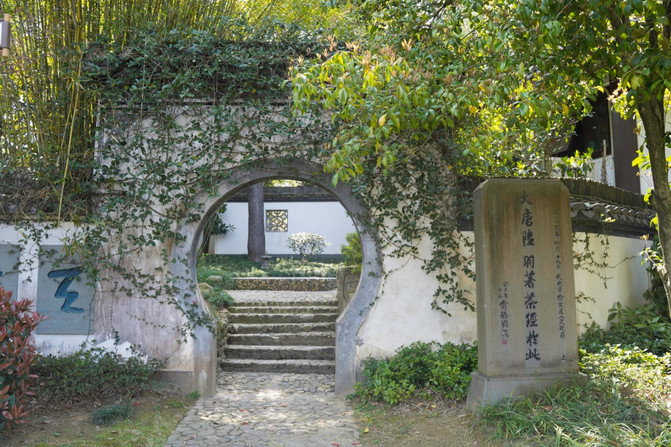

The tea culture that has been passed down for thousands of years has become more fragrant in the atmosphere of the Tang Dynasty reproduced in Luyuquan Park. At the entrance of Lu Yuquan, there is a weathered stele engraved with "Lu Yu wrote the tea scripture here in the lobby." There is such a stone carving on the other side of the wall. The stone carving reads "The Third Spring in the World". When you step into this door, you can see Lu Yuquan, where Lu Yu wrote scriptures.


According to records, Lu Yuquan has a history of more than 1200 years. It is accompanied by towering ancient camphor trees. The spring is divided into two mouths, one large and the other small. The water from the big well was used to wash Chu, and the water from the small well was used to make tea. Today, Lu Yuquan is still extremely clear, with clear spring water visible at the bottom. In the thatched hut next to Lu Yuquan, there is also a statue of the tea saint Lu Yu.
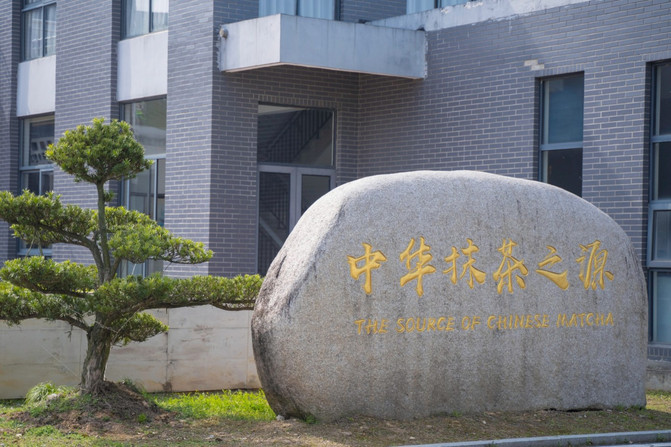
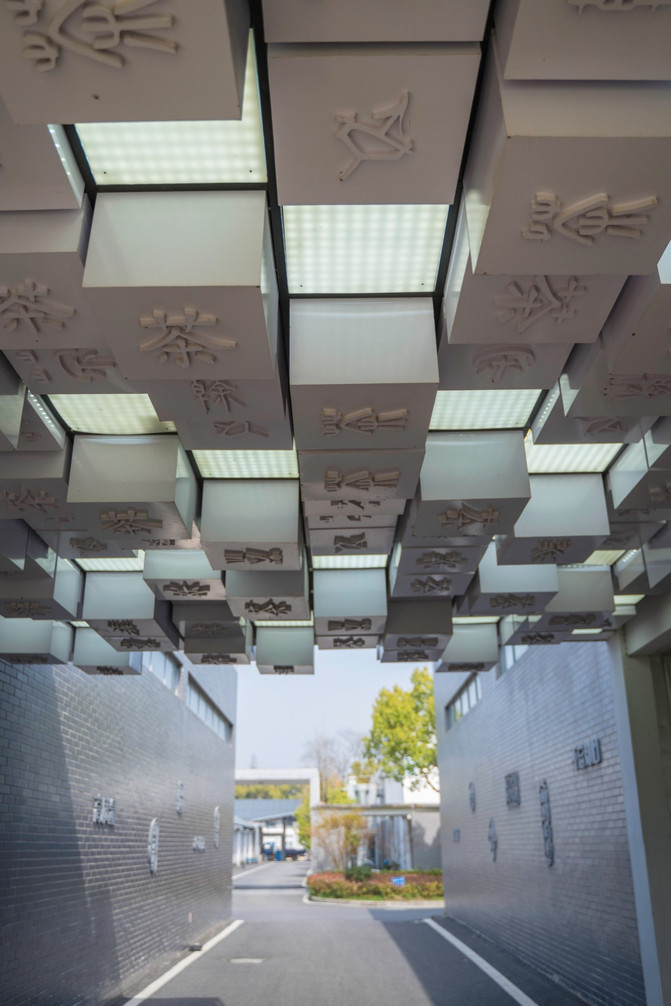
Tea originated in China and spread to Japan into the well-known Japanese tea ceremony and matcha. With the re-understanding and pursuit of Chinese tea culture by contemporary young people, the Song style tea consumption trend represented by ordering tea and finishing (wiping) tea shows great charm of tea culture, which in turn sets off a new trend of tea drinking. The real "matcha" culture requires inheritance, integrity and innovation. In Jingshan, there is such a highly innovative modern tea factory-Jiuyu Organic.


As soon as you step into the factory, you can smell the refreshing aroma of tea and matcha. As Jiuyu, who has been deeply involved in the tea field for more than 20 years, it not only built its own ecological tea garden in the core area of Jingshan, but also steadily led Matcha back to China through innovation and other methods, and created Jiuyu, a high-end Matcha brand, to make tea and order tea culture closer to young people.


When you come to Jiuyu's leisure space, it no longer looks like a factory's space. It is so young and the decoration style of the tea bar not only displays a dazzling array of products here, but you can also sit around with a special cup of matcha drinks; it is also so classic. Here not only displays ancient tea ordering tools, but also experiences the classic tea ordering craft.
Previous Article:Stroll through Xixi Paradise, to the right is the Wild Wetland Park, and to the left is the five-star hotel cluster
Next Article:Unlock Hangzhou Tonglu's super exciting and fun outdoor camp. Please keep the actual combat strategies.
